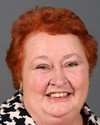You have three minutes.
Evidence of meeting #22 for Status of Women in the 40th Parliament, 2nd session. (The original version is on Parliament’s site, as are the minutes.) The winning word was men.
A recording is available from Parliament.
Evidence of meeting #22 for Status of Women in the 40th Parliament, 2nd session. (The original version is on Parliament’s site, as are the minutes.) The winning word was men.
A recording is available from Parliament.
Liberal

Anita Neville Liberal Winnipeg South Centre, MB
I perhaps won't need three minutes.
I was struck by your answer to Ms. Hoeppner's question, and was interested in the 600 hours less that you said women work. Have you done an in-depth analysis on why that is?
It was 600 less per month, is that right?
Chief, Social Analysis and Research, Social and Aboriginal Statistics Division, Statistics Canada
That was per year.
Liberal

Anita Neville Liberal Winnipeg South Centre, MB
Yes, per year, of course.
Why is it less? Is it the nature of the employment?
Chief, Social Analysis and Research, Social and Aboriginal Statistics Division, Statistics Canada
We don't actually know why it is; we just know that women....
We categorize “full-time”--it's a Statistics Canada construct--as 30 hours or more. That's what we consider to be full-time in the labour force survey, and indeed when we look at the labour market in general. So 30 hours or more is what we call full-time work.
The latest LFS numbers show that in April of this year, a woman worked about 37.9 hours per week and a man worked 43.9 hours per week. That's as of April. Over a period of a year, all of that, of course, adds up. But we don't know why they're working less.
Liberal

Anita Neville Liberal Winnipeg South Centre, MB
Anecdotally, the young women I know are working very hard, doing long hours. They're probably putting in 10-hour and 12-hour days. So I'm a little bit surprised by that figure.
Do you intend to do any kind of analysis on it, based on age, region of the country, or whatever defining characteristics you look at? Because I'm quite surprised by that figure.
Director, Social and Aboriginal Statistics Division, Statistics Canada
Certainly it would be possible. There are certainly rich sources of information on this. It is an issue that probably needs a little bit more looking into to explain it. We have the information available.
Conservative

Sylvie Boucher Conservative Beauport—Limoilou, QC
I have a question that is nagging me and I will put it to you. We want to have an overall picture of the status of women. When you enter statistics in data bases, are there any questions that deal only with women? For instance, I am thinking about the 600 hours per year that Ms. Neville and Ms. Hoeppner mentioned. Do you ask why women work 600 hours less than men? Why do more women work on a part-time basis than men? A number of people say that it is by choice, which is true, but do we know why? Do we put specific questions to women to obtain data that reflect the real situation?
Director, Social and Aboriginal Statistics Division, Statistics Canada
Certainly on the part-time, I'm not sure that we asked a question about choice. Rather, we asked in a very objective way why they are working part-time. So it could be for child care, personal reasons, going to school, or if they weren't able to find full employment. So we can disaggregate that a lot more.
In terms of the hours, I think again there is a vast amount of data we could have different questions about. You could look at that, disaggregate it, and understand it better. We haven't had the opportunity to do that for this committee, but it's there and the information is available.
Conservative

Sylvie Boucher Conservative Beauport—Limoilou, QC
So, you do a sampling by putting general questions, but you never put any specific questions about the reasons that would lead me to choose to work on a part-time basis, which would help us to get a clear idea of the true situation. It might be because I have to take care of children, of the groceries or of other things. Now, these questions are not being put. We have an overall picture, but it is not focused. That is what I understand.
Director General, Census Subject Matter, Social and Demographic Statistics, Statistics Canada
In our surveys, we ask for the reasons why a person is working on a part-time basis. Is it because of child care or is it because of studies? Is it because she was not able to find a full-time job? We put these questions very objectively. We have quite an extensive data bank that can be used for this kind of study.
Conservative

Sylvie Boucher Conservative Beauport—Limoilou, QC
At least, we know that you are putting specific questions.
I have another question.
Bloc

Nicole Demers Bloc Laval, QC
Thank you, Madam Chair.
Ms. Williams, your specific field of interest is social and aboriginal statistics. Could you give us some statistics on the degree of education of aboriginal women, the place they occupy in the labour market, and as self-employed workers? It is important to know the differences between aboriginal and non-aboriginal women who are working independently, and to find out if there is much difference in their incomes. We also must know what the wages are on the regular job market, so as to have a better idea of their situation. Aboriginal women are a specific group that we can address, but there are also immigrant women, more broadly speaking.
Director, Social and Aboriginal Statistics Division, Statistics Canada
Certainly we have all of that information, particularly from the census. In the census, which we conduct every five years, we certainly have extensive information on their labour market conditions. We pulled some out on this in terms of education, and we certainly could look at self-employment and earnings. We also identify the aboriginal population in many ways--that is part of my expertise--and immigrants. So you can slice and dice the data in many different ways. We have immigrants, non-immigrants, recent immigrants, and visible minorities. All of that is possible and is collected by us.
Bloc

Nicole Demers Bloc Laval, QC
Could you send us those documents, Ms. Badets?
Ms. Bender, could you send us the documents on the 1992 study on invisible work?
Director General, Census Subject Matter, Social and Demographic Statistics, Statistics Canada
Certainly.
Conservative

Lois Brown Conservative Newmarket—Aurora, ON
Yes, I'll make it really quick.
This is a follow-up, Ms. Demers, to your question about aboriginal women.
With the statistics you are compiling there, would it be worth while to look at the ability for aboriginal women to have their own assets, particularly in matrimonial property? Would that make the opportunity available for aboriginal women to be more successful in the future? Is that something you've looked at? Are there any statistics to support that at this point in time?
Director, Social and Aboriginal Statistics Division, Statistics Canada
Certainly we have a number of different data sources on aboriginal women and men. Not only do we have the census, which I've mentioned, and the labour force survey.... A lot of the data we showed you today is from the labour force survey, and we've started to identify aboriginal in there as well, so that gives you a vast amount of information.
And then we have a special survey we conduct, called the aboriginal peoples survey, and we do ask general questions, as we've talked about here, in terms of their employment situation but also in terms of their unique situation as aboriginal. I don't know about the particular question you've asked. That's not one I know offhand. But there are a number of ways and there's a rich source of information we could look at.